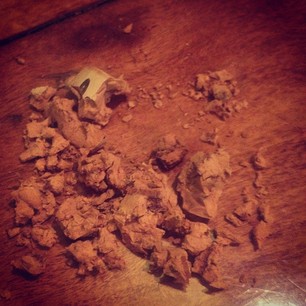I have evolved my views on this over the last decade, and must say that I am in very strong favor of using screwtops. Almost everyone else in the industry globally is also. Yet, there are a few hold-outs, including the Chinese (who seem to value the cork tradition more at this point in time). However, I believe that a few influential Chinese ‘wine thought leaders’ will come around quickly to the use of screw tops and then the rest of the nation will follow.
Fortunately the Australia wine industry is almost entirely converted to the use of screw top and recently awarded the 2012 McWilliams Maurice O’Shea Award to the ‘Australian Screwcap Initiative.’ (My use of ‘screw top’ and their use of ‘screwcap’ is interchangeable.) Usually this prestigious award goes to a great wine, but occasionally it goes to a theme or initiative and awarding it to the use of screw tops was a very bold step by the Australian wine industry which clearly announces the use of screw tops is clearly the future.
Almost simultaneously, the Italian wine authorities have approved the use of screw tops and other synthetic sealers to be used for their higher quality DOC and DOCG wines for the first time. Even the Europeans are starting to come around!
The science and evidence around the use of a slightly porous cork allowing a good to great wine to reach its full potential is just not there. Quite conclusively, the marginal potential differences are extremely minor or likely non-existent. Screw tops provide the same path to maturity and complexity that corks do as what has been bottled inside the seal is sufficient to create to most from the wine. The quality of the grape, the wine maker and the little bit of air in the ullage is far more important than the minute amount of air that may seep in over the next 10 – 20 years. And if that air amount is ‘more than a very little,’ the wine will oxidize and turn to vinegar.
Cork has some major issues which can make for a most unpleasant tasting experience:
- Cork failure rates are between 3% and 15% according to a variety of studies, even with cork quality control and checking – it is just the nature of the beast
- Sometimes an entire batch of bad corks makes it way to the market and can ruin an entire great vintage of great wine
- The variability of the exact same wine bottle to bottle is often visible and indicates that at least one of the bottles will be an unpleasant drinking experience!
 |
| One of the two undrinkable bottles of 2002 Wolf Blass Black Label |
The greatest disappointments I have had in wine drinking to open what you know is or should be a great bottle of wine, only to find it has been ‘corked.’ This has happened to me several times and pouring a $50 – $100 bottle of wine down the drain feels like ‘wine euthanasia.’ I will try anything to save such as bottle from considering it for cooking to rationalizing that is is drinkable and I just need to reduce my finicky standards a bit! But if I am going to share the wine others, I will not let it pass and have to move onto the next bottle – if I have a back-up bottle (which I usually do, but this is not always convenient or possible).
I hate to be disappointed, especially when it is beyond my control to have the right outcome. It is my fault if I leave a vintage far too long and the wine has deadened, lost it fruit, or lost its structure. I can control that and avoid that happening. But there is nothing I can do about having received a bottle of wine with a bad cork in it. And even with a good cork, it is difficult to get 20 years of solid performance without it becoming saturated and starting to seep. This puts at risk most of your best bottles that require 20 years to age. That is why every two years, Penfolds offers free re-corking of Grange and other iconic Penfolds wines as some of them require 30 years or more to be optimally drinkable.
My view is that avoiding this disappointment (a corked bottle) far outweighs what extremely small possibility that for a limited few bottles of wine, that aging under cork ‘may’ yield a slightly better result than the same bottle under screw top. You are guaranteed that bottle after bottle will be at its best and consistent when under screw top. The only chance of the bottle going bad is if you have scorched it from storing it in too hot a condition.
The other problem with the variability of cork, is that if you have several dozen bottles, they are likely to age differently and the chance you will be drinking each bottle at its best is diminished. With screw top, you know they will age at the same pace and be consistently drinkable during an optimum period of time. The need to provide a ‘back-up’ bottle is no longer necessary.
“Yes,” I certainly enjoy the experience of taking out an old cork and will miss that experience more and more over time, but enjoying that sensation does come close to masquerading the the disappointment of a ‘corked’ bottle. Insist on buying under screw top from now on and don’t take the risk.

